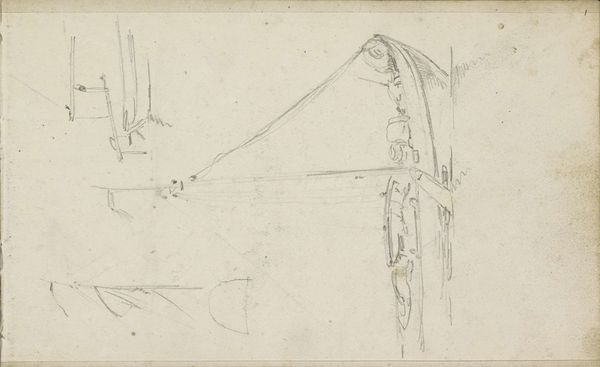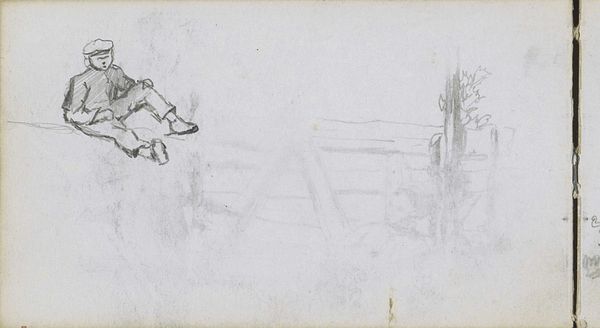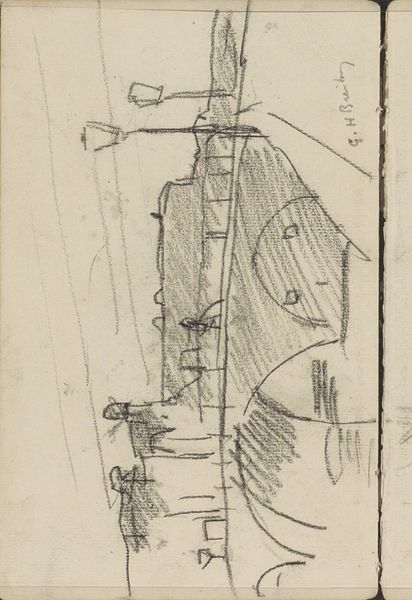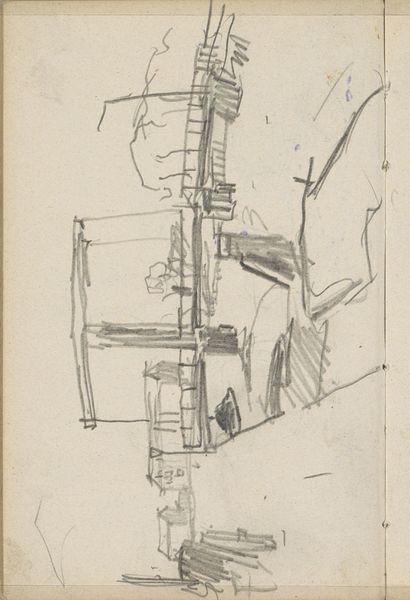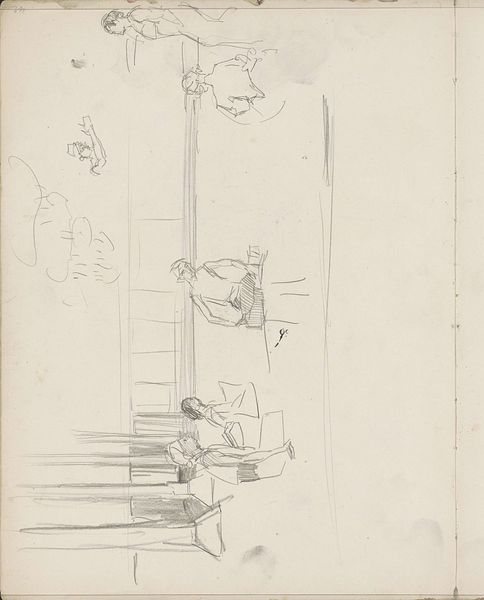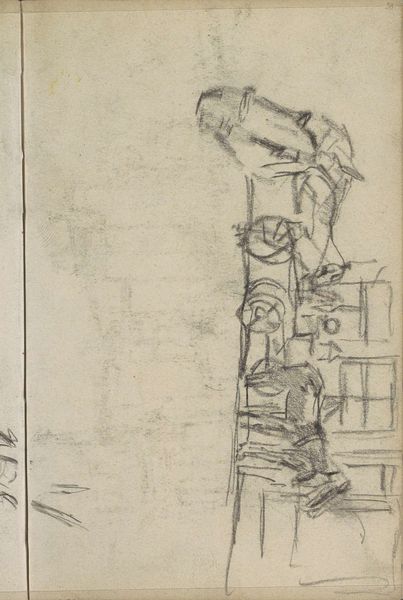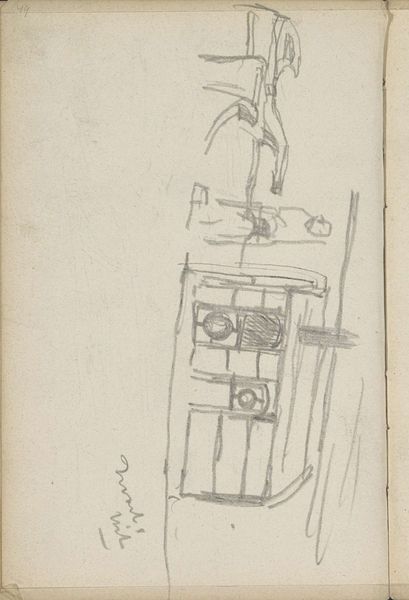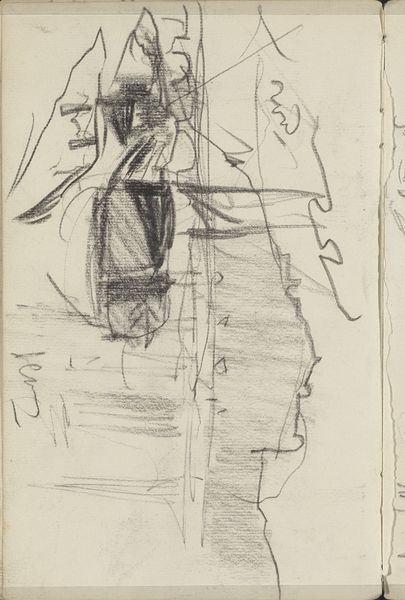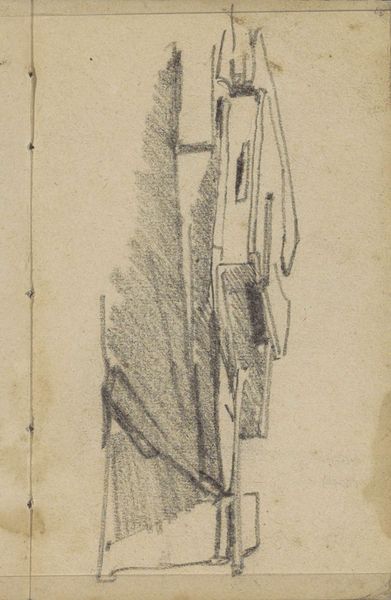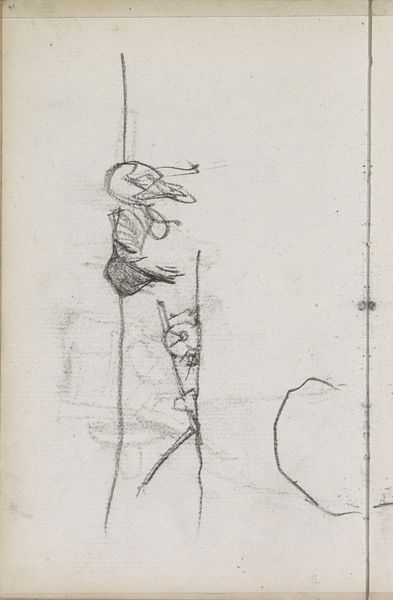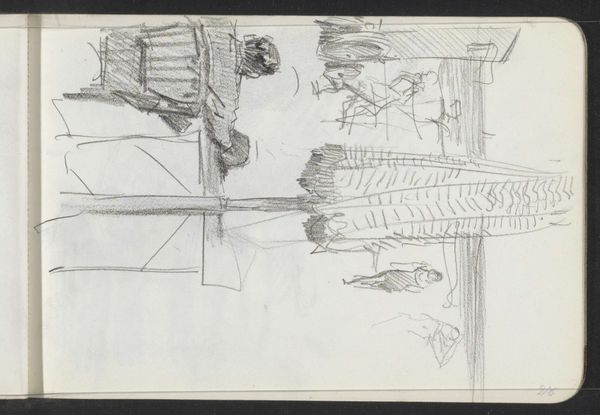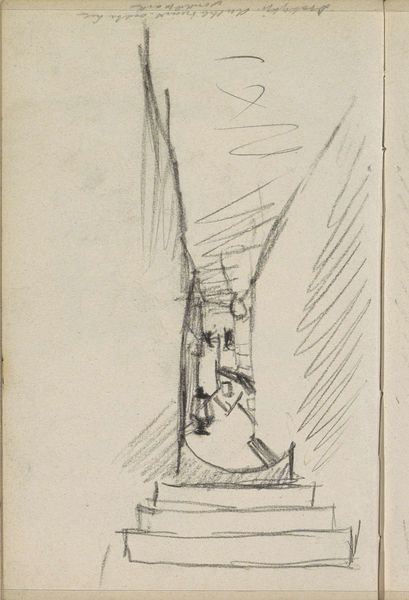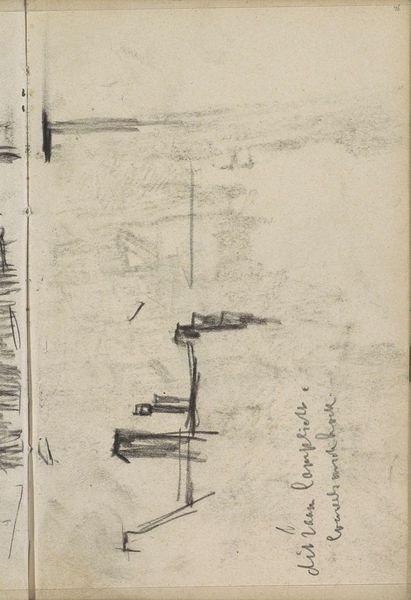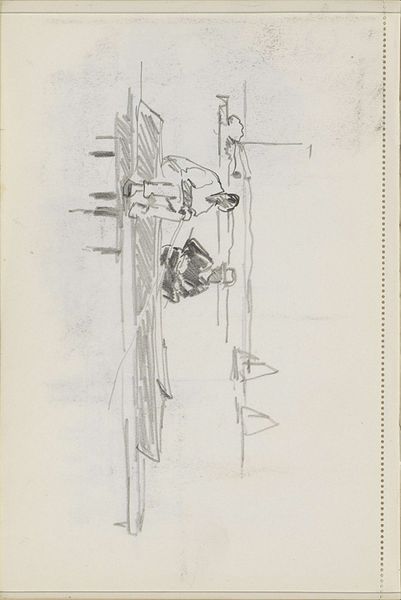
Copyright: Rijks Museum: Open Domain
Editor: Here we have George Hendrik Breitner’s “Woman on a Balcony in Amsterdam,” a pencil drawing done sometime between 1912 and 1919. There’s a lovely spontaneity to the sketch, but it feels very incomplete. What draws your eye, and what can you tell us about its context? Curator: Well, Breitner was deeply interested in capturing modern life in Amsterdam. Drawings like this, quick and observational, offer a fascinating window into the rapidly changing urban environment. They reflect his fascination with the everyday, particularly the lives of working-class women. This immediacy, however, often faced resistance from the established art world which was more inclined towards genre and allegorical imagery. What do you think that resistance reflects? Editor: I suppose those in power might have resisted scenes from normal lives because that was also normalizing them. The city is grittier, less idealized here. It makes me think about who has the right to be portrayed. Curator: Precisely. Breitner’s focus challenged the prevailing notions of what was considered worthy of artistic representation. Moreover, his use of a rapid, almost journalistic style, reflected a democratisation of the image-making process, something that would continue to be explored throughout the 20th century. Think about how photography was also impacting this perception. Editor: That makes perfect sense. Seeing this now, the ‘unfinished’ quality seems less like a flaw and more like a conscious decision to capture a fleeting moment in a quickly evolving world. I initially judged it without that context. Curator: And that’s the beauty of engaging with art, isn't it? It teaches us to see beyond initial impressions and understand the social forces at play. I’ve certainly come to see his commitment to contemporary observation in a new light thanks to your point of view.
Comments
No comments
Be the first to comment and join the conversation on the ultimate creative platform.
